Tree House Garden Ideas: Crafting a Magical Outdoor Retreat
Treehouses can transform your garden into a magical space where both kids and adults can unwind and enjoy a slice of nature. By incorporating unique designs and thoughtful features, your treehouse can become a standout focal point in your backyard.
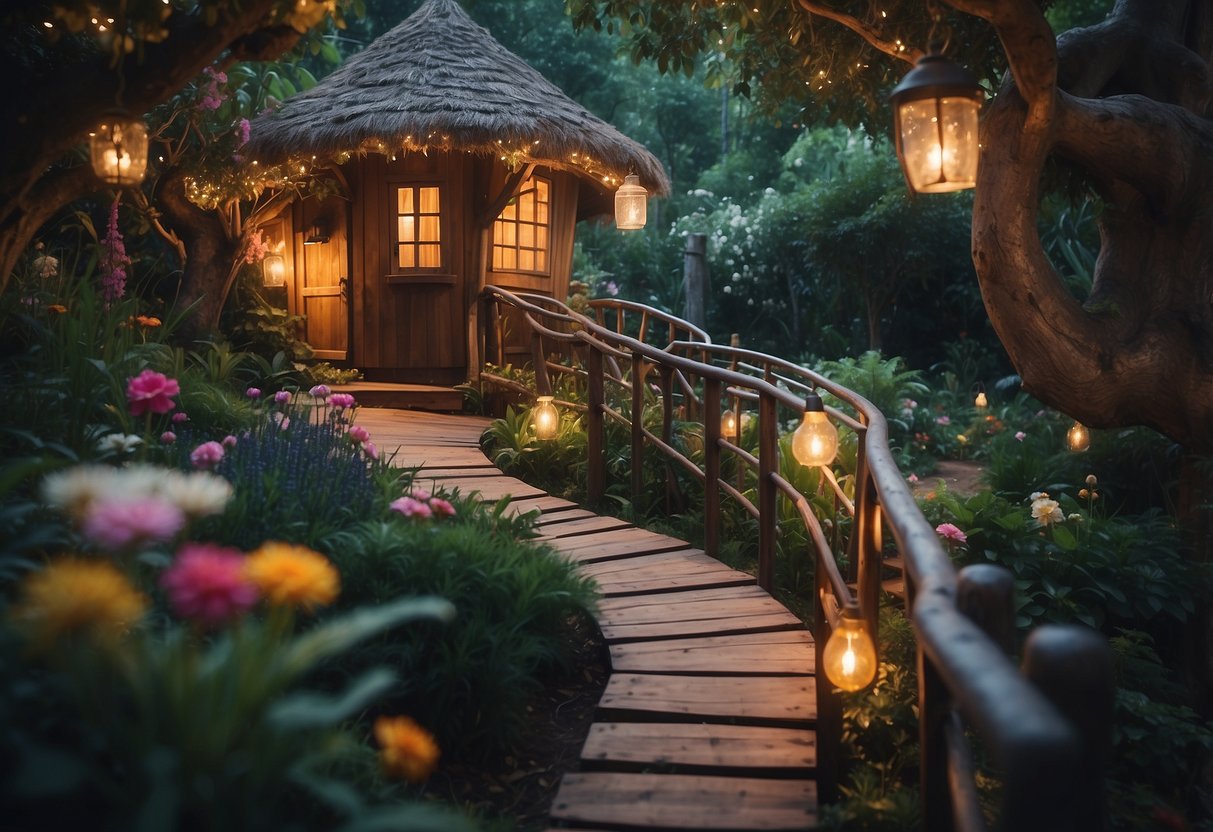
Looking to add charm and adventure to your outdoor area? Whether it’s a simple platform for children to play on or a luxurious retreat for relaxation, there are countless ideas to inspire your treehouse project. From whimsical designs to practical additions, you’ll find endless ways to elevate your garden with a treehouse.
1) Hanging Hammock for Relaxation
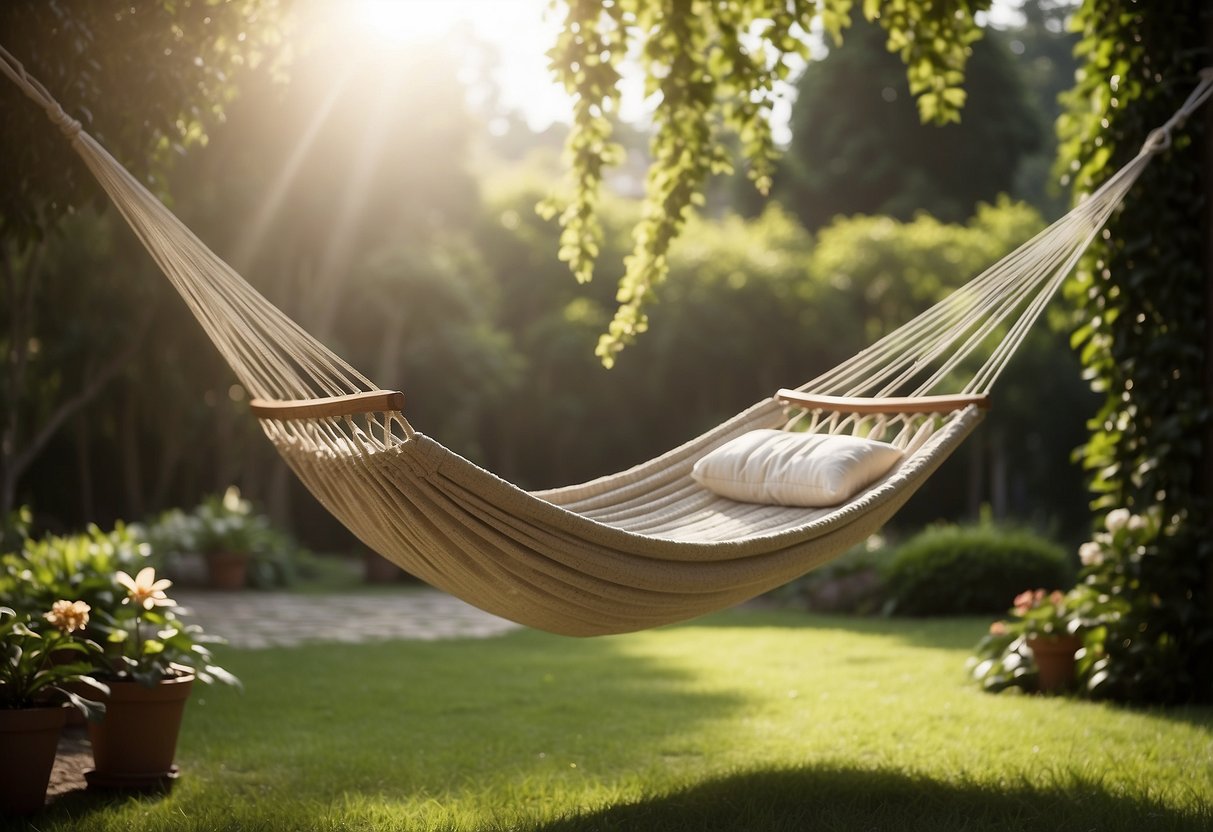
Imagine a cozy hammock tucked between trees in your garden. It’s your personal retreat where you can unwind and enjoy nature.
Look for strong trees about 10 to 15 feet apart. Use tree straps or sturdy rope to secure your hammock.
Add fairy lights or a soft blanket to make it even more inviting. Relaxing in your hammock will become your favorite garden escape.
For more ideas, check out these backyard hammock ideas and serene hammock setups.
2) Vertical Herb Garden
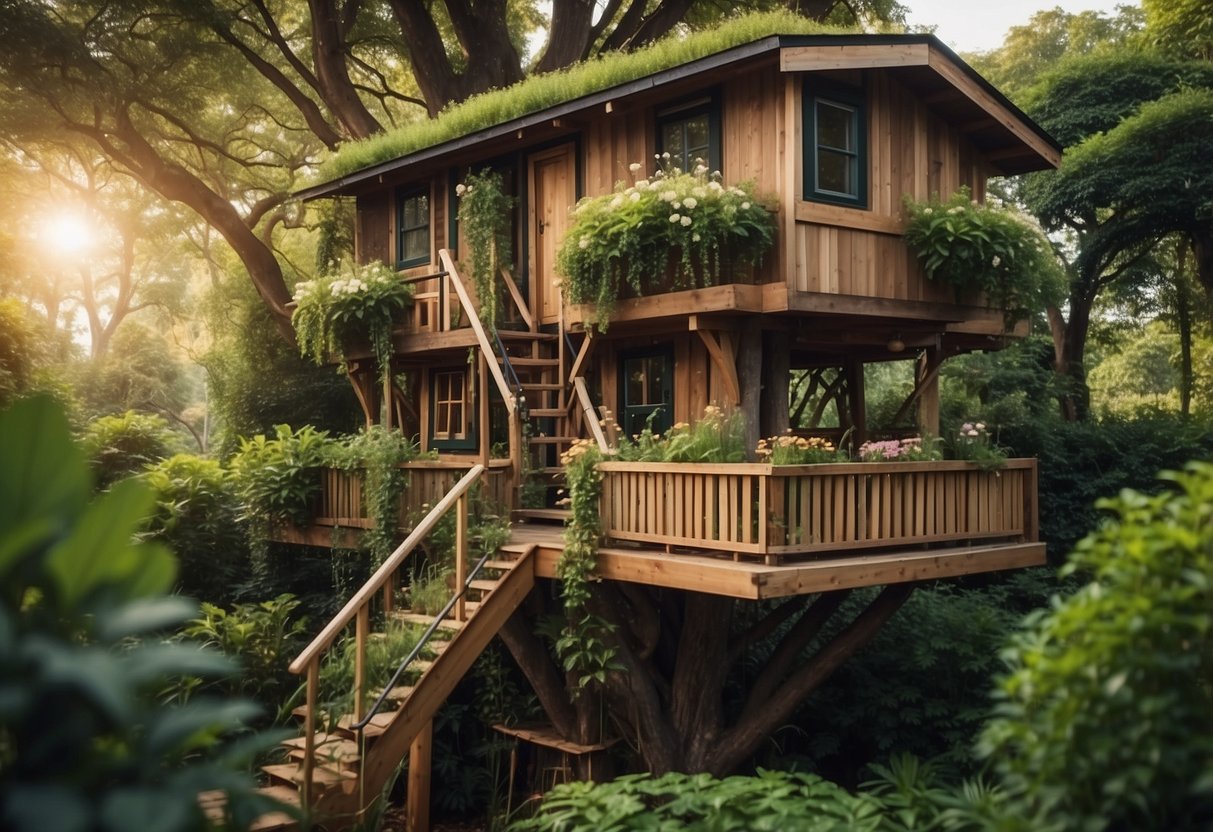
Creating a vertical herb garden in your tree house is a fun and easy way to maximize space. You can use hanging shelves with terra-cotta pots to display your herbs. This method is both decorative and functional.
For a unique look, add planters to a wall or fence. A slat wall works well for this and makes your space look great. You can also use a wooden ladder to create a leaning vertical garden.
If you have an old bar cart, try the Ikea hack to turn it into a mobile herb garden. This way, you can move your herbs around to catch the best sunlight.
3) Rope Climbing Ladder

A rope climbing ladder can add a fun and adventurous element to your treehouse garden. It’s not just practical but also a great way for the kids to develop their climbing skills.
You’ll need sturdy ropes and wooden rungs to build it. Make sure the knots are tight and secure.
Check out this guide for nine different DIY rope ladder ideas that you can try today!
4) Swinging Bench
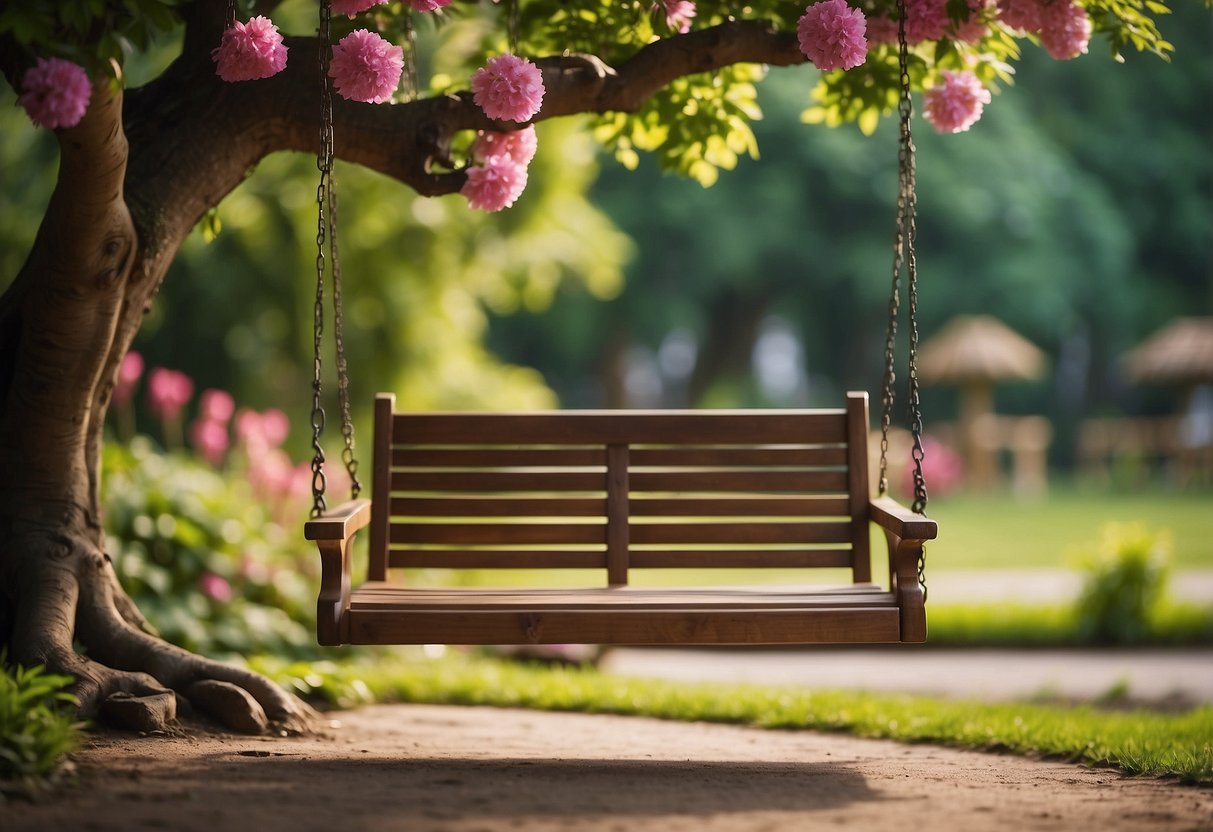
A swinging bench adds charm to your tree house garden. It’s perfect for relaxing, reading, or enjoying the view.
You can make a simple swinging bench using wood and sturdy ropes. Check out these diy tree swing plans that are both functional and stylish.
Besides, a swinging bench can also serve as a fun spot for kids to play.
5) Reading Nook with Cushions
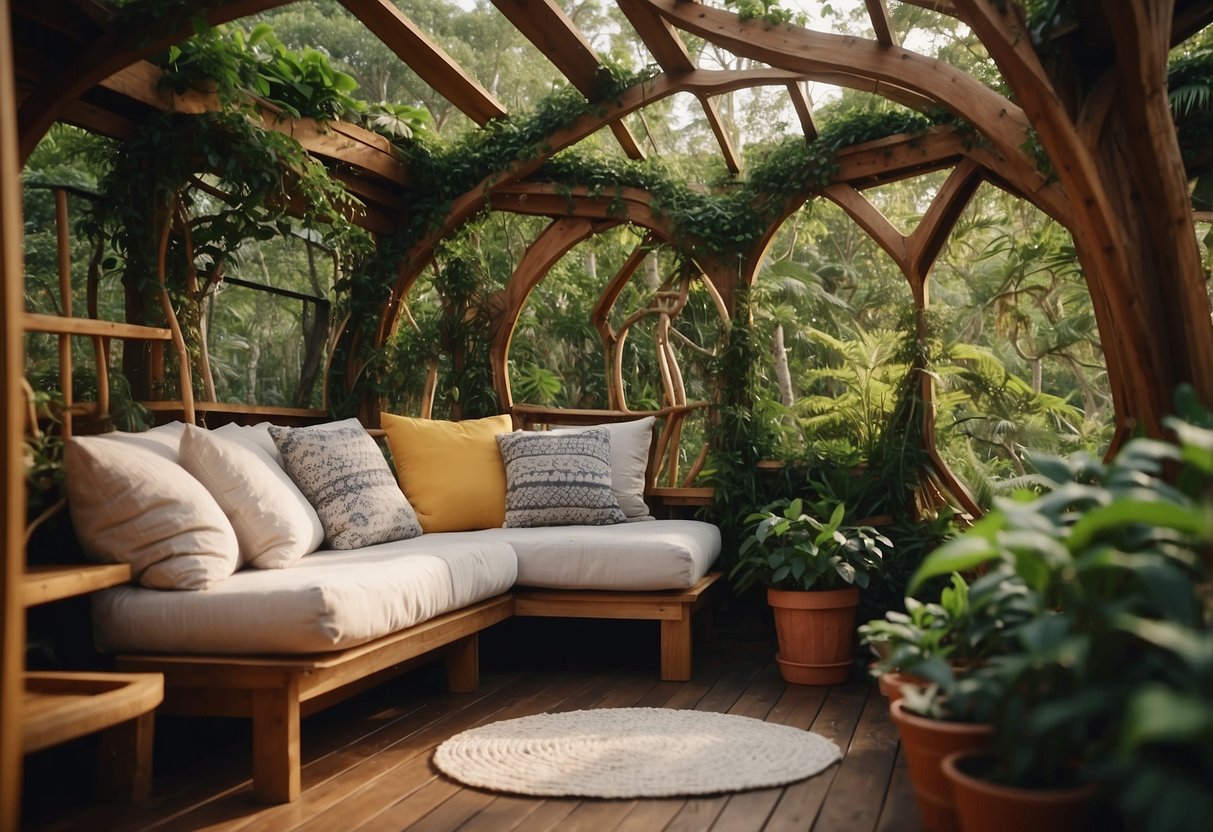
A tree house is a perfect spot for a cozy reading nook. Start with a few soft, plush cushions to create a comfortable seating area. You can mix and match different textures and colors to give it a unique look.
Use sturdy, weather-resistant fabrics for outdoor tree houses. Add a small side table to hold your books and a cup of tea. Imagine settling in with a good book while surrounded by nature.
For extra comfort, include a few throw blankets. It’s a simple way to make your tree house a perfect reading retreat.
6) Fairy Light Canopy
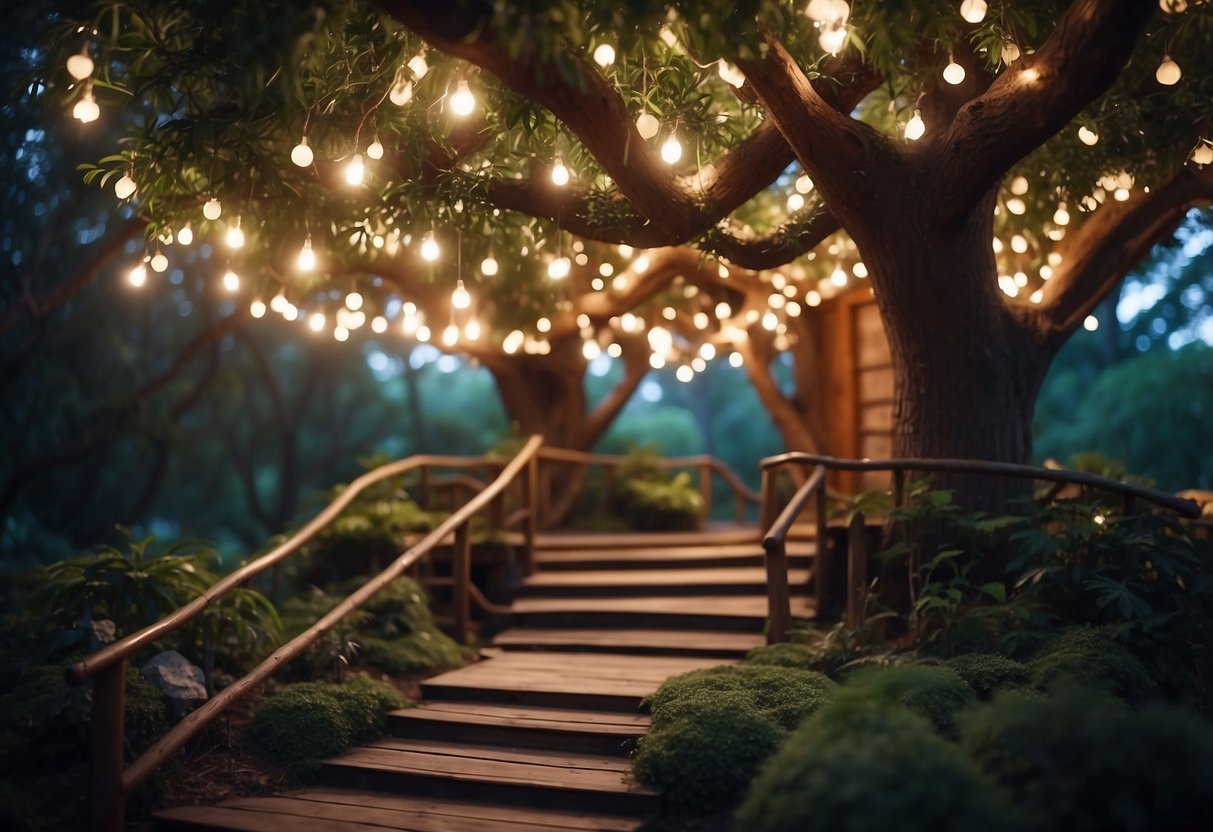
Hang fairy lights above your tree house to create a magical canopy.
Use string lights with warm bulbs to give a cozy glow. Drape them from branch to branch, forming a tent-like structure.
Fairy lights are great for evening gatherings or quiet nights. They make your garden feel enchanting and inviting.
7) Mini Zip Line
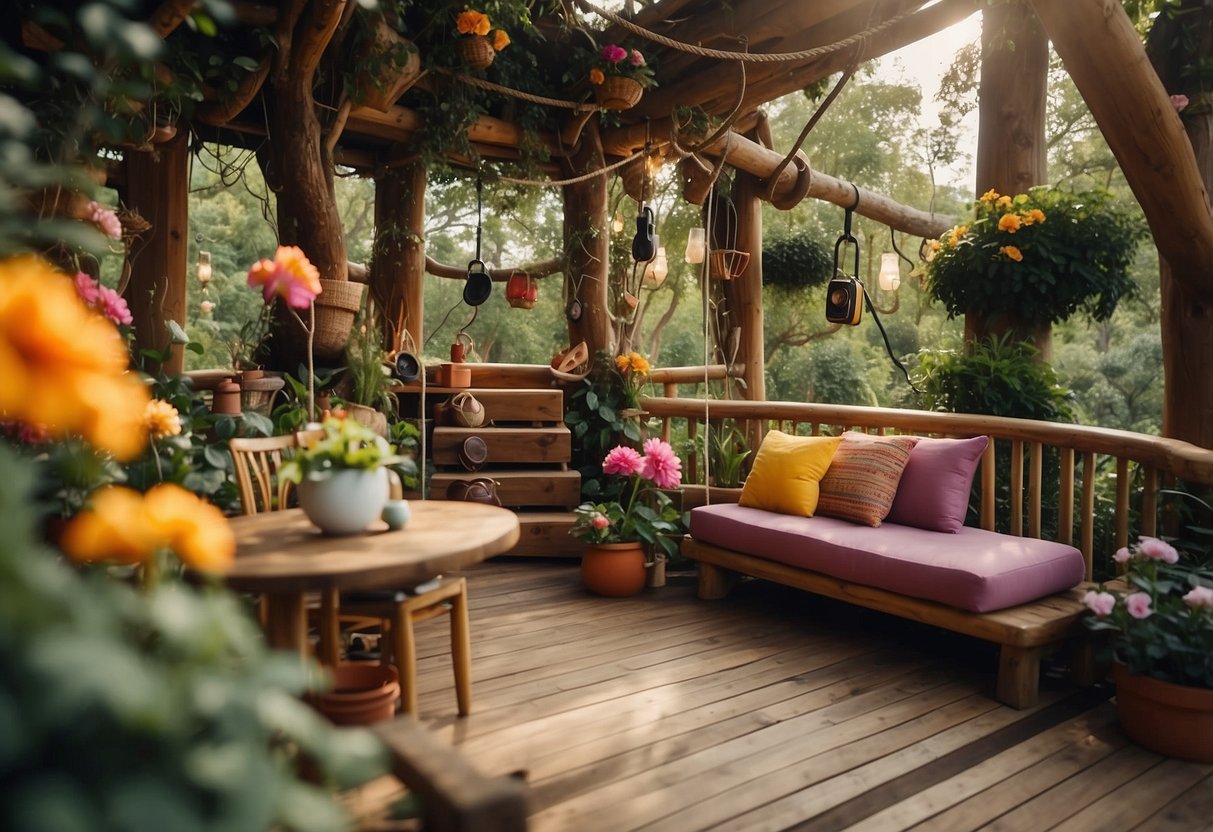
A mini zip line adds a thrilling element to your tree house garden. It’s perfect for both kids and adventurous adults.
To set it up, choose a sturdy tree as your starting point. Attach the main line securely, considering the height and slope. A drop of 3 to 6 feet per 100 feet of zip line is ideal for a smooth ride.
Don’t forget safety! Double-check the setup and always follow safety guidelines. Install a comfortable platform for launching and landing. Enjoy the fun and excitement your mini zip line brings to your garden. For more details, check out this guide on building a backyard zipline.
8) Bird Watching Platform
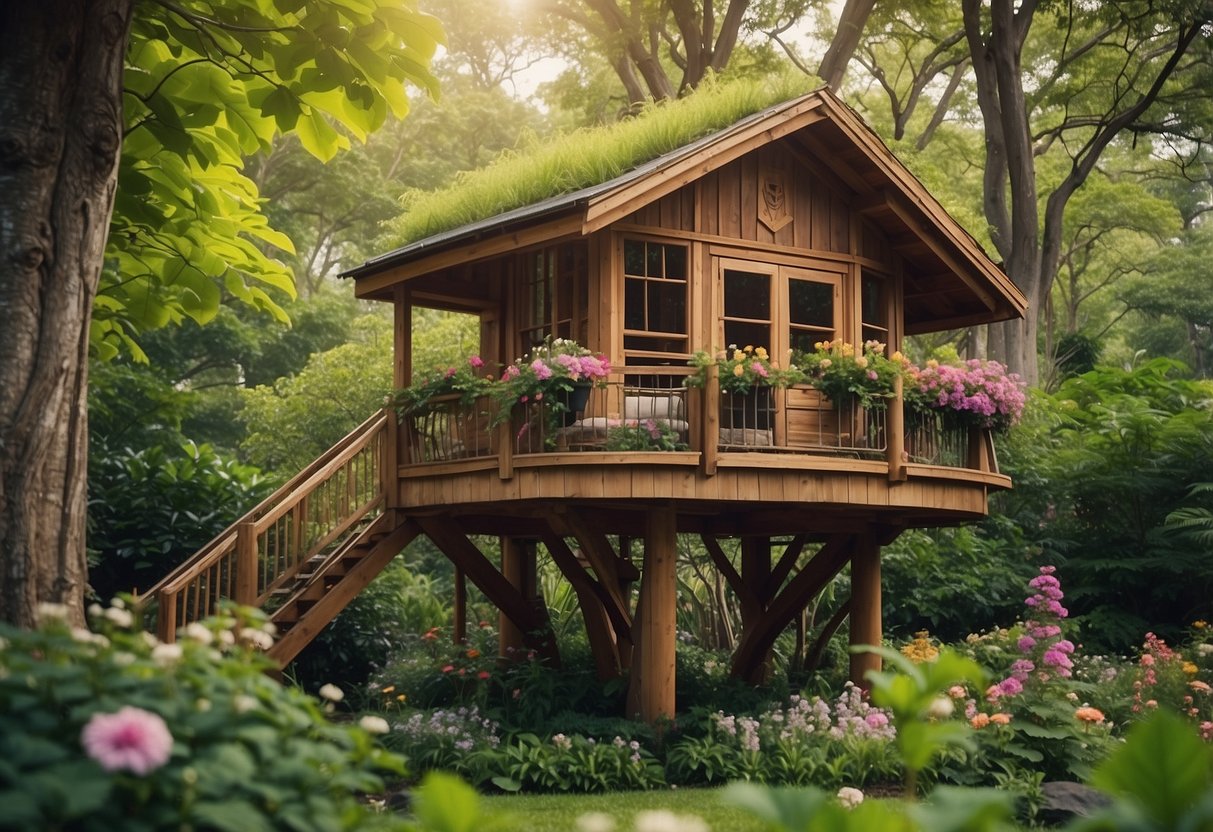
You can create a bird watching platform that doubles as a relaxing spot in your tree house garden. A raised deck allows you to see birds and other wildlife from a higher vantage point.
Consider adding bird feeders nearby to attract different species. Hummingbirds love nectar feeders, while ground-feeding birds enjoy cracked corn (learn more).
Building your platform near a wooded area can provide views of various birds and animals. It’s a peaceful place to enjoy nature.
9) Mosaic Tile Table

Adding a mosaic tile table to your tree house garden can bring a burst of color and personality. It’s not too big, so it won’t take up a lot of space.
You can create your own design using various tiles. For ideas, you can make a sea glass mosaic tabletop like the one found here. This project is fun and lets you customize your garden space.
10) Treehouse Slide
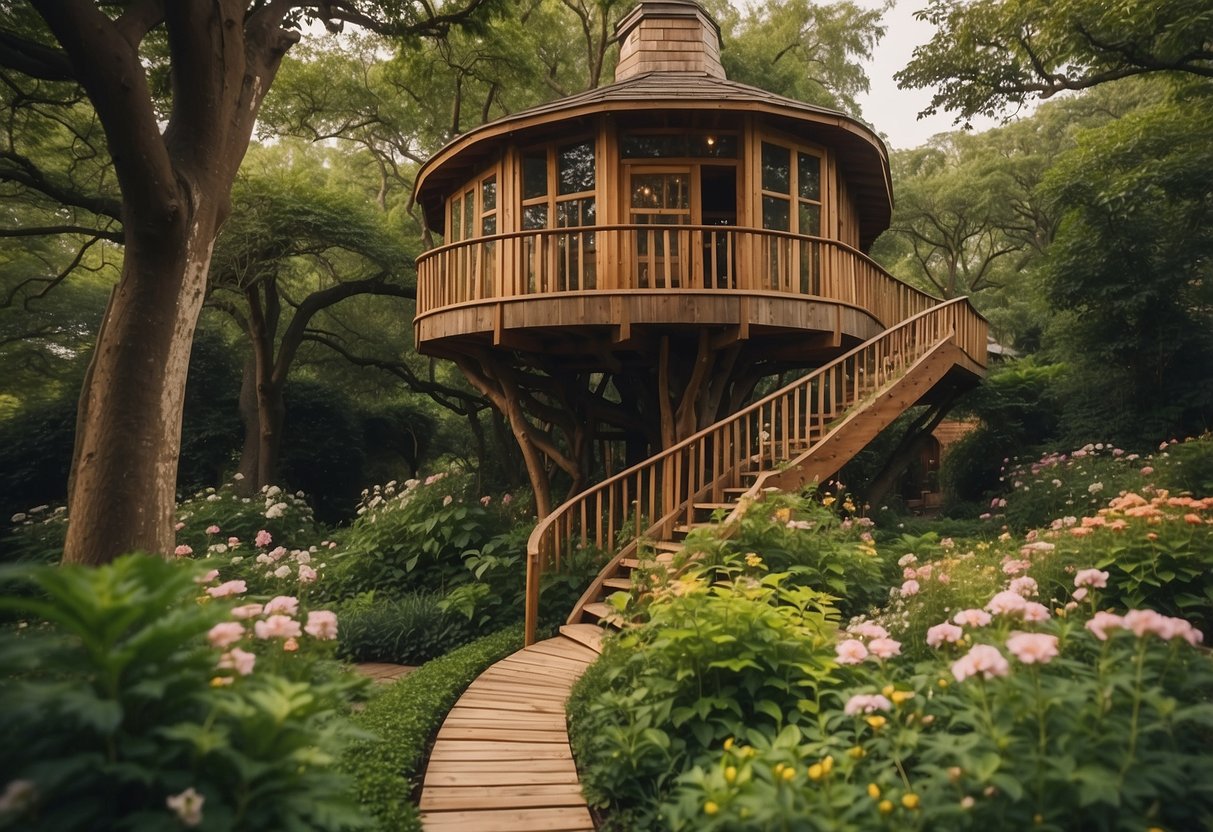
Adding a slide to your treehouse makes it much more exciting for your kids. Imagine them zooming down the slide, laughing and having fun!
Slides encourage physical activity and are a great way to keep kids active. It’s also a safe and enjoyable way to exit the treehouse quickly.
For more unique ideas, check out these treehouse design ideas.
Designing Your Tree House Garden

Creating a tree house garden involves selecting the right tree and incorporating key design elements. These choices will transform your space into a magical retreat.
Choosing the Right Tree
The tree you pick is the foundation of your tree house garden. Avoid trees with weak wood like willow or elm. Instead, opt for sturdy options such as oak, maple, or beech. They provide strong support and longevity.
Consider tree age and health. A mature, healthy tree is ideal. Check for any signs of disease or decay. You’ll also want to ensure the tree has a thick trunk and wide branches to safely hold your tree house.
Location matters too. Choose a tree in a sunny or partially shaded area. This way, your plants get the light they need. Avoid trees near power lines or too close to other structures for safety reasons.
Design Elements for Your Garden
When designing your garden, think about incorporating a variety of plants. Mix flowering plants, shrubs, and small trees to create layered greenery. Consider using climbing plants like ivy or wisteria to blend the tree house with the surroundings.
Add paths and small patios. These areas make it easy to move around and create cozy spots to sit and enjoy your garden. Wood or stone paths can add a rustic feel.
Water features like small ponds or fountains can introduce a calming element. These attract birds and butterflies, enhancing the natural vibe.
Don’t forget about lighting. String lights or solar-powered lanterns can make your garden enchanting at night. They also improve safety by lighting up pathways and stairs.
Use raised garden beds or pots for areas where planting directly in the ground isn’t possible. This allows you to grow vegetables, herbs, and flowers easily within reach of your tree house.
Plant Selection and Arrangement

Choosing the right plants and arranging them creatively can enhance your tree house garden, making it a vibrant and enjoyable space. You need to pick plants suited for the environment and arrange them to create an appealing look.
Best Plants for Tree House Gardens
When selecting plants for your tree house garden, consider the light and space available. Shade-loving plants like hostas and ferns thrive under tree cover. Succulents are great for sunny spots and need minimal water. If you want flowers, impatiens and begonias are great choices because they do well in partial shade.
For a splash of color and texture, try placing hanging baskets with plants like trailing ivy or calibrachoa. Herbs such as mint and thyme can add fragrance and be used in your cooking. Choose compact and low-maintenance plants, which are easier to manage and less likely to damage the tree.
Creative Plant Arrangements
Arranging your plants creatively can transform your tree house garden into a relaxing retreat. Use vertical space by attaching flower pots to the tree trunk or hanging planters from branches. This maximizes space and adds layers.
Create a tiered effect with stacked pots on different shelves or steps. Color coordination between plants and pots can make the area look cohesive. Mixing different textures and heights of plants can also add visual interest.
Add a small table with a large potted plant as a centerpiece. Use window boxes on the tree house railings filled with cascading flowers like petunias. Integrate climbing plants such as clematis to cover railings and supports for a lush, green effect.
Maintenance Tips for Your Garden
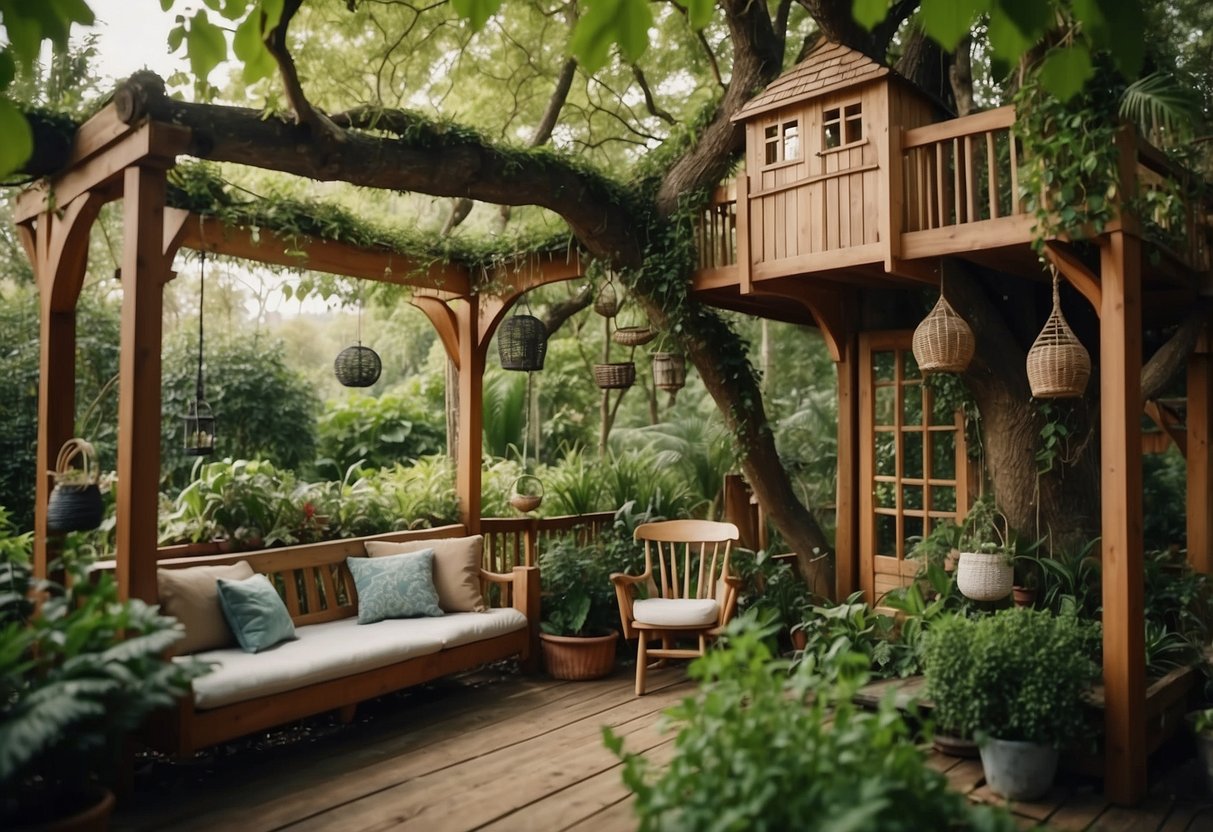
Keeping your garden healthy involves regular watering, caring for the soil, and addressing pests and diseases. These tasks are crucial for maintaining a vibrant and thriving garden space.
Watering and Soil Care
Watering your garden correctly is key. You should water early in the morning or late in the evening when it’s cooler. This helps prevent water from evaporating too quickly. Use a drip irrigation system or soaker hoses to ensure water reaches deep into the soil.
Soil care involves regularly checking soil moisture and adding mulch to retain water. You can improve soil health by adding compost and organic matter. This boosts nutrient levels and encourages beneficial microorganisms. Test your soil every few years to see if it needs any amendments.
Dealing with Pests and Diseases
To keep your garden free from pests and diseases, regular monitoring is essential. Inspect plants frequently for signs of trouble. If you notice holes in leaves or discolored patches, you may have a pest issue. Use natural remedies like neem oil or insecticidal soap to safely treat problems without harming beneficial insects.
Diseases can be tackled by ensuring good air circulation around plants. Space them well and avoid overhead watering to reduce the risk of fungal infections. Removing affected leaves promptly and disposing of them properly also helps prevent the spread of diseases. If necessary, use organic fungicides to protect your plants.
Taking these steps will help maintain a healthy and productive garden. These tips are straightforward to follow and can make all the difference in the long-term health of your garden.







